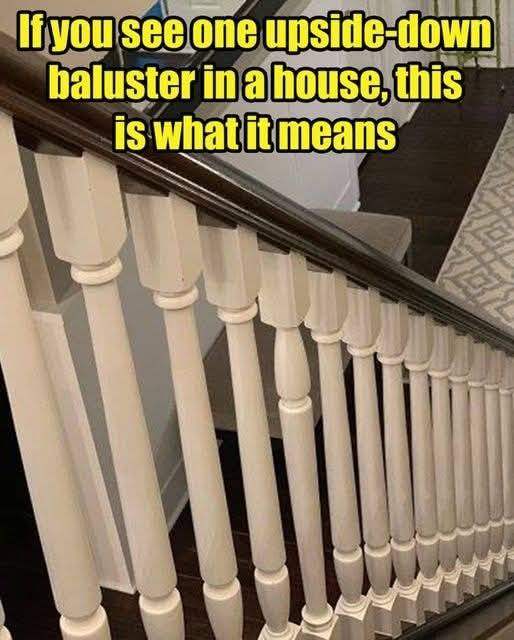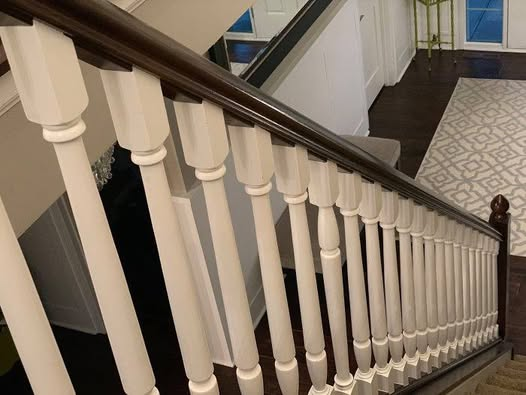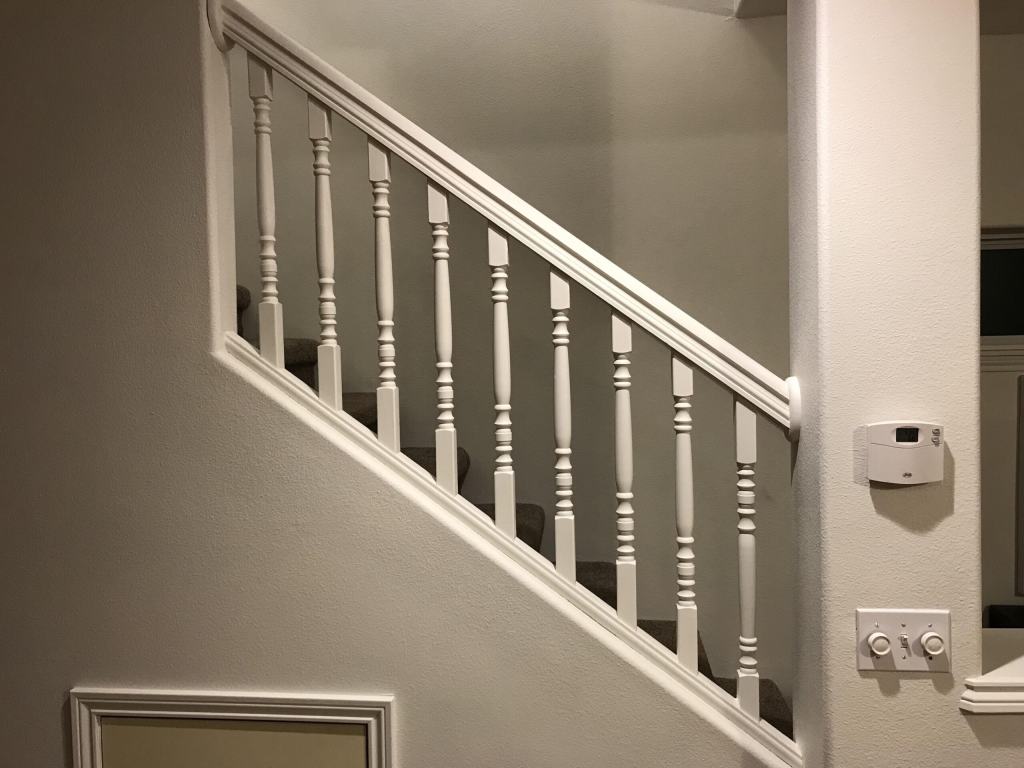At first glance, an upside-down baluster on a staircase might seem like a construction error or an odd design choice. However, this quirky detail has a deep-rooted history filled with superstition, tradition, and architectural symbolism. Whether you see it as an imperfection or a deliberate touch, this unusual feature tells a fascinating story about craftsmanship, beliefs, and the balance between aesthetics and tradition.

A Superstition That Protects the Home
For those who believe in folklore, the inverted baluster is far more than just an asymmetrical design element. It is said to serve as a barrier against evil spirits, preventing them from reaching the upper levels of a home.
The belief stems from the idea that spirits, particularly malevolent ones, can only move in straight, uninterrupted lines. By breaking the pattern with an upside-down baluster, carpenters aimed to confuse these entities, stopping them from traveling upstairs and entering the living spaces.
This superstition dates back centuries, to a time when architecture and spirituality were closely linked. Staircases, seen as a bridge between different realms, were believed to serve as passageways between the physical world and the supernatural. The intentional disruption of the staircase’s symmetry was thought to act as a protective measure against unwanted spirits.
Video: How Wood Stair Balusters Are Made | The Making Of
A Mark of Humility in Craftsmanship
Beyond its supernatural significance, the upside-down baluster also represents a philosophical and religious belief about human imperfection. Some religious craftsmen intentionally included a design flaw in their work to acknowledge that only a divine being is perfect. This humble gesture was a way to show respect and humility, reminding builders that no matter how skilled they were, their work would never surpass divine creation.
This practice can be found in various forms of traditional craftsmanship, from rug weaving to cathedral construction. The concept of “wabi-sabi” in Japanese culture also embraces imperfection as a form of beauty, valuing asymmetry and slight flaws in artistic creations.
Symbolism of Balance and Duality
In a more architectural and philosophical sense, staircases naturally represent a journey between two states—ascending and descending, one level to another. The incorporation of an upside-down baluster introduces an element of balance, breaking the uniformity to create a visual equilibrium.
While staircases are designed for practical movement between floors, their structure often carries deeper meanings. The inverted baluster can be seen as a symbol of harmony, reminding us that life itself is full of imperfections and contrasts.
More Common Than You Think

The tradition of installing an upside-down baluster is more widespread than many realize. In 2020, HGTV and DIY Network host Scott McGillivray posted a photo on social media featuring a staircase with a single inverted baluster. The image sparked curiosity and thousands of reactions from followers.
Some commenters recognized the historical significance, noting that it was a common feature in older homes. Others saw it as a spiritual symbol, referencing the belief that perfection is reserved for a higher power. A few joked that it was simply a carpenter’s mistake or a last-minute fix when materials ran out.
While some people find this design element charming, others—particularly those with OCD tendencies—admit that the visual asymmetry would drive them crazy. Regardless of personal perspective, this unique detail has persisted for generations, continuing to appear in historical homes and restorations.
The Intersection of Tradition and Modern Architecture
In today’s world of sleek, modern designs and standardized construction, traditions like the upside-down baluster are fading. However, some architects and builders still incorporate these small historical touches to pay homage to the past.
Homeowners who appreciate unique details and historical authenticity often choose to preserve or recreate these quirks in renovations. Whether as a nod to superstition, a respect for craftsmanship, or simply a conversation starter, the upside-down baluster remains a fascinating relic of old-world design.
What If Your Staircase Has One?

If you ever spot an inverted baluster in your home or a historical building, take a moment to appreciate its hidden meaning. Rather than being a mistake, it is likely a deliberate feature rooted in centuries of tradition.
For those who embrace superstition, it might provide a sense of protection. For design enthusiasts, it’s a glimpse into the artistic choices of past craftsmen. And for those who love history, it serves as a small yet meaningful reminder of the stories embedded in our surroundings.
Conclusion: More Than Just a Design Quirk
The upside-down baluster is a perfect example of how history, superstition, and craftsmanship intersect in architecture. Whether viewed as a guardian against evil, a sign of humility, or a simple artistic choice, it remains a unique and thought-provoking detail in many staircases.
Next time you walk up a flight of stairs, take a closer look. You might just be standing on a piece of history, a silent tribute to the past hidden in plain sight.


